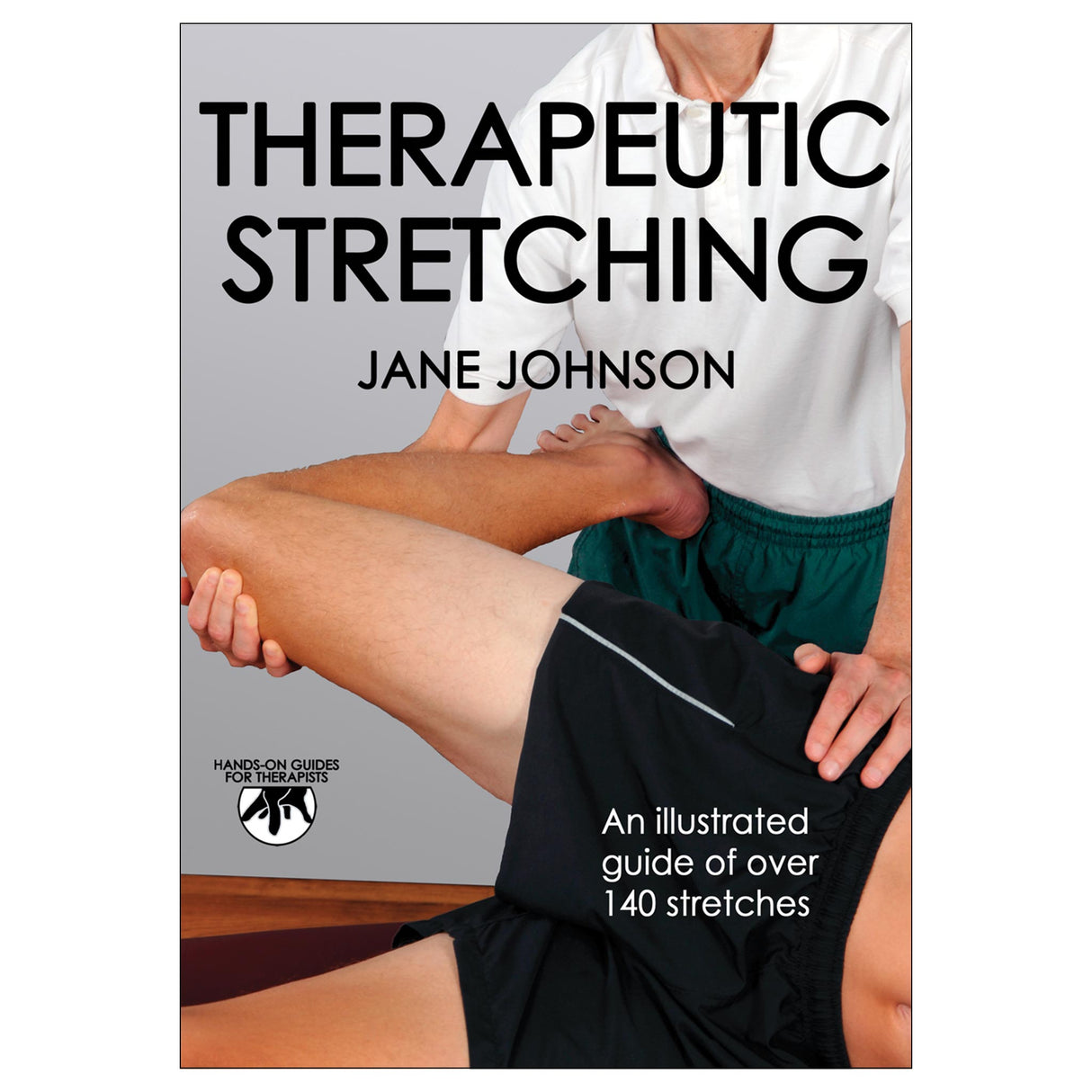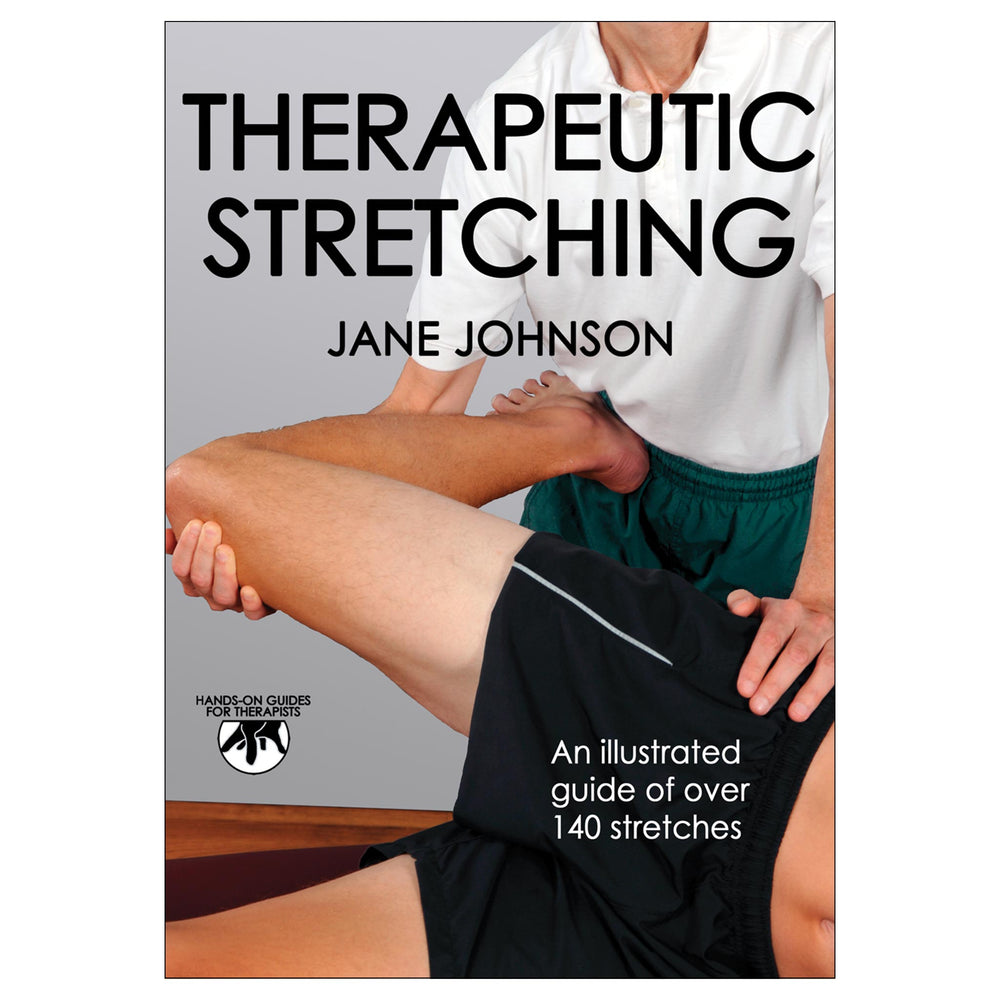Therapeutic Stretching PDF
Author: Jane Johnson
$38.95 CAD
Access Duration: 10 Years
Therapeutic Stretching focuses on the use of both active and passive stretching as part of the rehabilitation of common musculoskeletal conditions and injuries. Covering all forms of stretches for the able-bodied, injured, and selected special populations, Therapeutic Stretching is a comprehensive resource for practitioners and students working in massage therapy, osteopathy, physical therapy, occupational therapy, rehabilitation, and personal and athletic training.
With both active and passive stretches outlined for a range of musculoskeletal conditions and injuries, Therapeutic Stretching offers a range of rehabilitative stretches for the foot and ankle, knee and leg, hip and thigh, upper limb, shoulder, elbow, wrist, hand and fingers, and back and neck. Author Jane Johnson, a practicing physiotherapist, sport massage therapist, and body work instructor, provides information on incorporating passive stretching as a treatment option and selecting appropriate active stretches for clients to practice at home.
Heavily illustrated with more than 230 color photos, Therapeutic Stretching provides excellent visual instruction on client positioning and the most effective handholds for the application of passive stretches to various joints and soft tissues. A user-friendly format, clear explanations of stretching techniques, and visual guidance from photos help students and practitioners readily incorporate these stretches into their practice.
Therapeutic Stretching outlines the rationale for stretching after musculoskeletal injury along with general safety guidelines and an overview of the musculoskeletal conditions addressed in the text. Also included is a discussion of the differences between and applications of passive, active, and advanced forms of stretching such as muscle energy technique (MET) and soft tissue release (STR).
Readers of Therapeutic Stretching will find a 10-step process for designing, implementing, and assessing a stretching program. The text discusses applications of therapeutic stretching for three special populations: elderly clients, pregnant women, and athletes. For each, a listing of common physiological factors or characteristics that might affect a stretching program is included, along with tips on modifications to employ when working with these individuals.
Following this foundational information are three chapters with photos and descriptions of active and passive stretches for musculoskeletal injuries and conditions of the lower limbs, upper limbs, and trunk. Here readers will find stretches useful for treating injuries and conditions such as sprained ankles, shin splints, runner’s knee, tight calves or hamstrings, adhesive capsulitis, lateral epicondylitis, stiff wrists, kyphosis, low back pain, stiff neck, and whiplash.
Special Tip boxes throughout the text offer guidance on modifying the stretches and techniques to meet the needs of individual clients. Tables detail the passive and active stretches covered in each chapter and indicate whether a stretch is contraindicated for a particular injury or condition. Following most chapters are five Quick Questions that assist readers in gauging their understanding of the content.
In addition, Therapeutic Stretching includes a visual guide to stretching routines that could be performed in the prone, supine, and seated positions. These suggested routines assist students and practitioners new to therapeutic stretching in learning to apply these stretches in an efficient manner and without excessive repositioning of the client.
Therapeutic Stretching offers a range of stretches to assist both current and future practitioners in safely treating clients rehabilitating from musculoskeletal conditions and injuries. Delivering the most up-to-date stretching techniques, this guide is a valuable resource for professionals in health care, rehabilitation, fitness, and body work seeking tools to assist their clients in alleviating muscular pain, reducing joint stiffness, and speeding recovery from injury.
Therapeutic Stretching is part of the Hands-On Guides for Therapists series, providing tools of assessment and treatment that fall well within the realm of massage therapists but may be useful for other body workers, such as osteopaths and fitness instructors. The guides include full-color instructional photographs, Tips sections that provide advice on adjusting massage techniques, Client Talk boxes that present ideas for creatively applying techniques for various types of clients, and questions that test knowledge and skill.
Part I. Getting Started with Therapeutic Stretching
Chapter 1. Introduction to Therapeutic Stretching
What Is Therapeutic Stretching?
The Need for Therapeutic Stretching
Why Should I Incorporate Stretching Into My Practice?
Overview of Musculoskeletal Conditions Covered in This Book
Why Do People Stretch?
The Challenge of Designing a Stretching Protocol
The Rationale for Stretching After Musculoskeletal Injury
General Safety Guidelines
Closing Remarks
Quick Questions
Chapter 2. Preparing for Stretching
Step 1: Assess the Client
Step 2: Identify Treatment Objectives
Step 3: Choose a Stretching Method
Step 4: Set Stretching Goals
Step 5: Screen for Contraindications
Step 6: Contemplate the Stretching Environment
Step 7: Take Measurements
Step 8: Create a Stretching Plan
Step 9: Carry Out Stretches
Step 10: Reassess and Document Findings
Closing Remarks
Quick Questions
Part II. Stretching Methods
Chapter 3. Active and Passive Stretching
Active and Passive Stretching Definitions, Advantages, and Disadvantages
Guidelines for Providing an Active Stretching Programme
Guidelines for Applying Passive Stretches
Closing Remarks
Quick Questions
Chapter 4. Advanced Forms of Stretching
Muscle Energy Technique
Soft Tissue Release
Closing Remarks
Quick Questions
Part III. Implementing Your Stretches
Chapter 5. Stretching the Lower Limb
Foot and Ankle
Knee and Leg
Hip and Thigh
Quick Questions
Chapter 6. Stretching the Upper Limb
Shoulder
Elbow
Wrist, Hand and Fingers
Quick Questions
Chapter 7. Stretching the Trunk
Head and Neck
Trunk
Quick Questions
Part IV. Stretching Routines
Chapter 8. Prone Stretching Routine
The Lower Limb
The Upper Limb
Chapter 9. Supine Stretching Routine
Lower Limb
Upper Limb
Trunk
Chapter 10. Seated Stretching Routine
Lower Limb
Upper Limb
Trunk
Questions for Self-Reflection
“This is an excellent guide for incorporating stretching into a therapeutic treatment or rehabilitation protocol. The necessity of including the goals and methods of measuring progress of stretching is highlighted in the book, something which often seems to be left out of a typical treatment plan. The approach is novel, arranging recommended stretches by injury or condition, rather than just body part.”
--Doody’s Book Review (4-star review)





